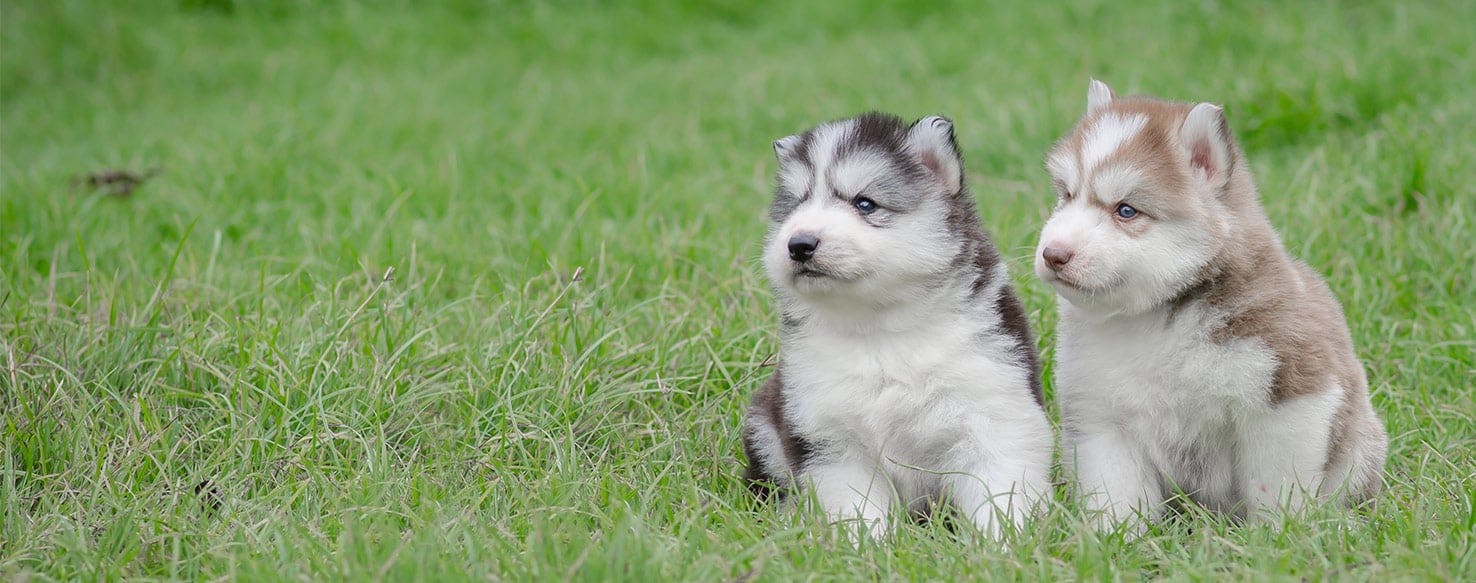- Home
- The Daily Wag!
- Senses
- Can Dogs Be Twins?

One in every thirty-four children born is a twin or a triplet. While not totally uncommon, you may not run into a twin every day. With dogs though, we have to wonder whether or not they can have twins or triplets at all. As most of us know, dogs are known to have litters with about five or six pups in them.
This begs the question that if a dog has multiple puppies in a litter, is there a chance any of those pups are identical twins or triplets? How do we determine whether or not two dogs are identical twins or not, especially under the circumstances of being born with four to five other pups.
It is pretty difficult to determine if your dog has an identical twin out there somewhere, as most people lose contact with their pup's parents and siblings as the years draw on. Scientifically though, there is a pretty large amount evidence pointing towards the fact that your dog is, in fact, a twin - or maybe even a triplet.
We have to differentiate the difference between identical and fraternal twins. When you think of identical twins, the first thing that comes to mind is the fact that they are, well, identical. Fraternal twins, on the other hand, do not always look alike, but even with that fact, most pups from the same litter look similar.
When considering whether or not your dog may have a twin, you must realize that with pups, they technically could be considered twins with all of their litter-mates. Twins are defined as two offspring that came from the same pregnancy. You will be able to tell that the pups look pretty similar.
If you notice that two of them look almost the same, you could be looking at identical twin pups. Many times, litter-mates will look quite similar no matter what since they are coming from the same parents, but in some cases, they may look so similar that there is an actual chance they share the same DNA. Pups having identical twins has been considered a rarity, but it is not actually known how rare it truly is.
Other Signs
Some characteristics of identical twin pups are:
- Identical Markings
- Two Pups In One Placenta
- Born At The Same Time
- Shared Dna (If Blood Tests Are Performed)
There hasn't yet been much research done on the topic of dogs having twins. Normally, a dog giving birth will have her pups and that is that. A mother dog will often give birth and then eat the placenta, which is a perfectly natural thing for them to do.
Because the mother often eats the placentas, there is usually no way of knowing how many there were in the first place. Since this happens, no one generally pays attention to how many there actually were. This is so important because we may have many more identical pups in the world than initially thought, but because we don't count the placentas, we do not have the true numbers.
It would be hard to know either way since up until recent years, scientists have primarily assumed that all litter-mates were twins, triplets and so on. In 2016 though, a vet name Kurt de Cramer in South Africa was performing a Caesarean Section on a dog and quickly came to the conclusion that he was helping to birth identical puppy twins. He was able to figure this out because he found two pups connected to the same placenta.
After this, he noted that there may have been many more instances of identical twins, but because the number of C-sections for dogs is so low compared with natural births, it is very hard to tell when two pups share a placenta. With that being said, Kurt de Cramer is now known for helping to birth the first documented identical puppy twins.
Just as with humans, twins are an oddity. It doesn't always happen and when it does, it is because of out of the ordinary circumstances. Identical twins occur when a single egg splits off into two separate entities. When they are born, they will share the same DNA but they will still have slightly different features if you look close enough.
This is because everything that happens after conception will affect the two eggs slightly differently. They are in minutely different locations in the womb, will be born at different exact times and will have different things happen to them throughout their lives.
Dogs that are twins are unique, not just because they are rare, but because we truly do not know yet how rare they are. Scientists are now working on studies that will help us understand this aspect of our pups much better.
Have questions or concerns about your pet?
Chat with a veterinary professional in the Wag! app 24/7.
Get Vet ChatWritten by a Keeshond lover Molly Martin
Veterinary reviewed by:
Published: 03/20/2018, edited: 04/06/2020
More articles by Molly Martin

